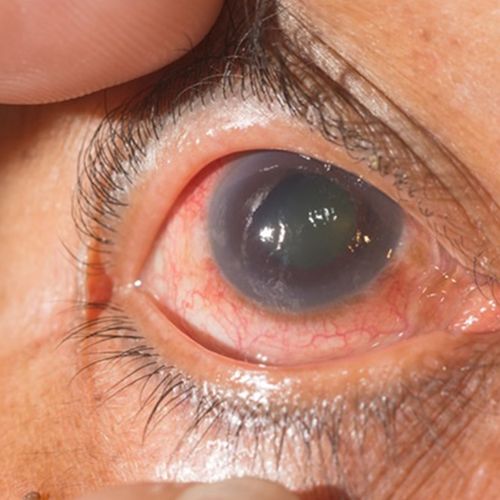Low vision, a permanent vision impairment that cannot be improved by standard eyeglasses, surgery or medical treatment, affects approximately 14 million Americans. Ninety percent of the eye diseases that lead to low vision-macular degeneration, diabetic retinopathy, glaucoma and cataracts accompanied by additional eye problems-occur in people over age 50.
Now: Vision aids—devices that provide magnification, light and/or contrast-can help people with low vision perform tasks that otherwise would be difficult or even impossible. Few doctors prescribe these aids for their patients—so only about 20% to 25% of people with low vision are using them.
Get A Proper Evaluation
If you have vision loss due to macular degeneration, diabetic retinopathy, glaucoma or cataracts, it is a good idea to consult an ophthalmologist (a medical doctor who diagnoses and treats eye diseases) or optometrist (a doctor who treats eye conditions not needing surgery) who specializes in low vision.
To find a low-vision specialist in your area, consult the free referral service sponsored by the American Academy of Ophthalmology, the American Optometric Association and Lighthouse International, a not-for-profit organization that provides education, research, advocacy and rehabilitation services, 800-829-0500, www.vision connection.org click on "Find Help Near You').
The doctor will perform a detailed evaluation of your visual function, including your contrast sensitivity and visual field. Based on his/her findings-and your lifestyle needs—the doctor will prescribe vision aids that best suit you. The products most widely used for low vision-including aids that do not require a prescription—are available at Maxi-Aids, 800-522-6294, www. maxiaids.com.. and Independent Living Aids, 800-537-2118, www.independentliving.com.
Best vision aids for the following eye conditions…
Macular Degeneration
The most common cause of low vision, macular degeneration occurs when the macula
the central part of the retina, which is responsible for sharpness, color and daylight vision) is damaged by gradual degeneration of retinal cells or hemorrhaging of underlying blood cells into the retina.
Best vision aids: Macular degeneration destroys central vision, so magnification is necessary for most people who have this disease. Magnifiers can be handheld ($10 to $150)...placed on a stand ($20 to $150...or even attached to your television or computer screen ($50 to $200). Tiny telescopes ($50 to $300) that magnify objects ranging from reading distance to far away can be held up to the eye or mounted on eyeglasses (by prescription only) to help you see better at the movies or the opera or while watching television.
Computer screen magnification is available with software such as BigShot ($99), which enlarges on-screen text up to two times its original size. The software can be purchased at Enable Mart, 888-640-1999, www.enablemart.com.
Diabetic Retinopathy
A complication of advanced or long-term diabetes, diabetic retinopathy results in peripheral and central vision loss. It is caused by leaking blood vessels that damage the entire retina, including the macula.
Best vision aids: Diabetic retinopathy affects each individual differently, but most require a variety of aids, such as magnifiers and large-print books and periodicals.
Vision aids that help patients administer insulin are good for those with moderate vision loss from diabetic retinopathy. The Count-a-Dose syringe-filling device ($59.95) makes a clicking sound that can be heard for each dosage increment. The Magni-Guide Magnifier and Needle Guide ($12) magnifies syringe markings and helps guide the syringe needle into an insulin vial.
Glaucoma
Increased eye pressure, resulting from a buildup of fluid in the eyes that damages the optic nerves, often leads to the progressive eye disease known as glaucoma. In late-stage glaucoma, the optic nerve damage can cause an irreversible loss of peripheral vision.
Although glaucoma patients typically retain their central vision, it is impaired because their ability to see contrast is significantly reduced. This makes it difficult to distinguish edges, such as those on a curb or steps.
Best vision aids: Good lighting and contrast enhancement are crucial for people with glaucoma. They usually need double or triple the amount of light that a person with normal vision would use. For reading, good options are Verilux lamps (the Verilux Happy-Eyes Deluxe Desk Lamp is available at www.egeneralmedi cal.com, 866-844-9402, for $79.95) or an Ott-Lite table lamp (available at Ott-Lite Technology, 800-842-8848, www.ottlite.com, for $13995). Both provide lighting that simulates the full spectrum of daylight, increasing clarity and reducing glare.
Warning: Regardless of whether you have low vision, never use halogen light for reading, Halogen is fine as an incidental light, but it is too intense as a direct reading light and can potentially damage the retina.
Cataracts
Although cataracts can be surgically removed, some people must delay or even forgo surgery because of other health problems, such as stroke or a broken hip. For these cataract patients, low-vision aids can be helpful until surgery can be performed.
Best vision aids: Magnification makes reading easier, and polarized sunglasses ($12 to $35) eliminate glare and are helpful for people who have had cataract surgery.
Also helpful: To increase contrast on steps, sinks and bathtubs, mark the edges with brightly colored tape. Reduce glare by installing adjustable blinds on windows and covering shiny surfaces with dark tablecloths or towels.
Exercise Cuts Risk of Eye Disease by 50%
Exercise helps reduce by half the odds of developing the wet form of macular degeneration, in which new blood vessels grow behind the eye, causing distorted vision and impaired sight. Even simple physical activity, such as walking three times a week or taking the stairs regularly, can help protect against the disease.
How Complete Is Your Eye Exam?
Beginning at age 40, you should be screened annually for glaucoma symptoms. See an ophthalmologist or optometrist, who should perform an exam that includes checking…
- Eye pressure.
- Optic nerve.
- Peripheral vision.
- The degree of angle opening.
To find an ophthalmologist or optometrist in your area, contact the American Academy of Ophthalmology (415-561-8500, www.aao.org) or the American Academy of Optometry (301-9841441, www.adopt.org)
